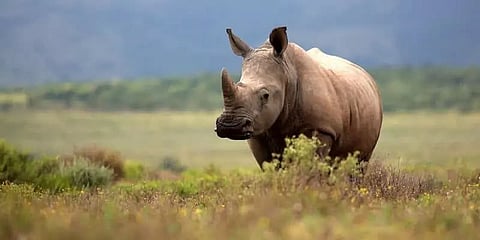
- Home
- Live Blog
- Breaking News
- Top Headlines
- Cities
- NE News
- Sentinel Media
- Sports
- Education
- Jobs

Inclusion of wildlife depredation as a State Specific disaster in Assam has paved the way for providing financial assistance to the victims of wildlife depredation from the State Disaster Response Fund (SDRF). This will facilitate increasing the amount of compensation to the next of kin of the victim to proposed Rs 4 lakh from the current amount of Rs 1 lakh. Timely release of compensation is critical in mitigating human-animal conflict in the state. The State Executive Committee of the Assam State Disaster Management Authority in its meeting held on March 23 approved a request by the Environment and Forest Department for issuing a separate notification for providing financial assistance to victims of wildlife depredation under the SDRF. If funds allocated and released by the National Disaster Management Authority are exhausted by a state, it can seek more funds from the National Disaster Response Fund (NDRF). This means that there will be no dearth of fund to pay compensation to victims of human animal conflict. Delay in payment of compensation to next of kins of those killed during man-animal conflict or those who properties, paddy fields are destroyed, on account of dearth of adequate fund add to the conflict as affected families are financially ravaged. Recurrence of the depredation, such as wild elephants gobbling paddy or destroying dwelling houses, trampling people to death push these families into penury. Retaliation in some places also leads to killing of wild animals by poisoning or electrocution by miscreants. The state government had already empowered the Principal Chief Conservator of Forest to take the final decision regarding payment of compensation to victims of man-elephant conflict. Earlier, the PCCF was required to forward the claims to the Environment and Forest Department which led to long delays in between filing of the compensation claims and payment of compensation. The State Governments are responsible for providing compensation for damage caused to crops and human beings by the wild animals. However, the Ministry of Environment Forest and Climate change also provides financial assistance to States/Union Territories under the centrally sponsored schemes of ''Integrated Development of Wildlife Habitats'', ''Project Tiger'' and 'Project Elephant'' for management of wildlife and its habitats which includes compensation for depredation by wild animals including cattle or other livestock lifting, crop damage, loss of human lives and properties, the central government informed the Lok Sabha. The assistance provided by the Ministry includes the ex-gratia relief to be paid for loss of life or property caused by wild animals. Ex- gratia payment in connection with wildlife depredation Rs 5 lakh in case of death or permanent incapacitation, Rs 2 lakh in case of grievous injury, up to Rs 25,000 in case of treatment of minor injury while in case of loss of property/crop cost norms prescribed by the state or Union territories. The SDRF/NDRF norms say that a State Government may use up to 10 per cent of the funds available under the SDRF for providing immediate relief to the victims of natural disasters that they consider to be 'disasters' within the local context in the State and which are not included in the notified list of disasters of the Ministry of Home Affairs. This is, however, subject to the condition that the State Government has listed the State specific natural disasters and notified clear and transparent norms and guidelines for such disasters with the approval of the State Executive Committee. Any amount spent by the State for such "local disasters" over and above the ceiling would be borne out of its own resources and would be subject to the same accounting norms, according to Guidelines on constitution and administration of SDRF/NDRF based on recommendations of the 15th Finance Commission for the period from 2021-22 to 2025-26. Total SDRF allocations for Assam for this period is Rs 3793 crores of which central government's share is Rs 3414 crores and the state government's share is Rs 379 crores. Thus, Assam will be able to spend up to Rs 379 crores for notified "State Specific disasters." Assam government declared erosion, storm and lightning as State Specific Disasters in 2015 and with the inclusion of wildlife depredation in the list, utilization of the SDRF fund available under this head is expected to gain momentum, provided the procedures for filing claims and release of compensation are not cumbersome. While compensation help mitigation of the conflict, conservation of protected areas remaining the primary focus of the management of wildlife depredation is essential to reduce man-animal conflict. Afforestation in degraded forests, preventing fragmentation of wildlife habitats will prevent wild animals from come out of their habitats to raid crop or lift livestock and reduce incidence of man animal conflict. Quantum of compensation for damaged properties is also critical for affected families for rebuilding lives and needs to be backed by clear norms.